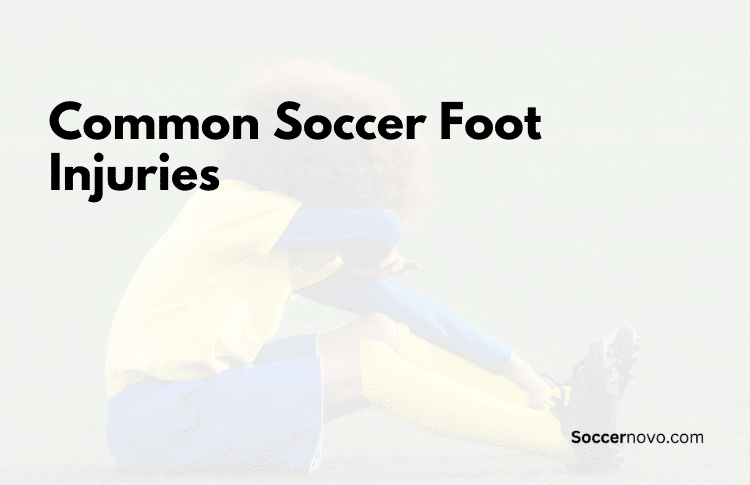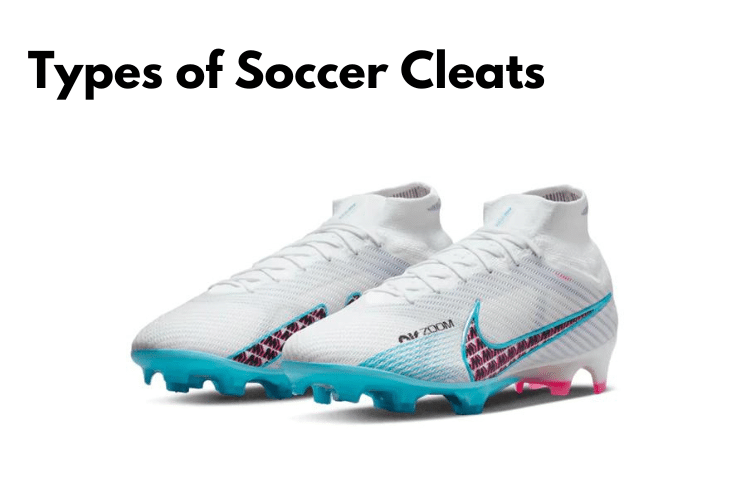How Should Soccer Cleats Fit?
Soccer cleats should feel snug without being uncomfortable. You should be able to wear soccer socks comfortably and wiggle your toes.
It is important to wear properly fitted cleats so you can optimize your performance and prevent nagging injuries.
Why is it important? Cleats that are too…
- Tight: they’ll limit your range of motion and you could develop long-term foot injuries.
- Loose: might create blisters or incorrectly rub your feet with the inner material.
My son played in cleats that were too loose and he didn’t say anything. He just rolled with it until he started getting blisters.
I got him one size down and the blisters eventually went away. He was able to get better touches on the ball, cut quicker, and strike the ball better. This is how important finding the right fit is!
The best way to know if cleats fit properly is to walk in them at home and train in them before playing any games. You’ll know if they are too tight, too loose, or just right!
Some brands like Nike will replace the cleats even if they’ve been worn. You’ll have to go through your original order receipt to understand the specifics about their refund or replacement policy.
How Should Your Soccer Cleats Fit?

Here is some advice on how to get the right fit for your soccer cleats:
Snug but Not Too Tight
Your
Your toes should have enough room to wiggle within the shoe, but the toe box shouldn’t be too roomy.
If the cleats cause your toes to be cramped up or if there is any pressure on your foot, they are too tight.
Consider The Variety Of Soccer Shoes
There are a wide variety of fits for soccer cleats. Firm-ground (FG) cleats, for instance, have longer studs and are intended for use on natural grass fields and artificial turf.
Indoor soccer shoes, on the other hand, have a flat sole and are made for use on artificial turf or hard surfaces like a basketball court.
To ensure a proper fit and most effectiveness, use footwear that is designed for the surface you will be playing on.
As a general rule, youth soccer players can feel safe playing in FG cleats since it is adaptable for grass and artificial turf fields.
Youth Soccer Cleats

Kids’
For example, if a player is in the middle of a growth spurt, you may want to get a ½ size bigger so that you aren’t buying another pair of new cleats in a month.
At the same time, you don’t want the cleats to be too loose or tight since this will hinder their effectiveness. Strive for a close fit that allows their toes enough flexibility to move.
Check for Heel Slippage
While sprinting or making quick cuts on the field, your heel shouldn’t move much from your cleats. The cleats are too large if your heel slips out of them.
Try on various sizes and designs until you discover one that snugly accommodates your heel.
Walk Around With The Cleats
Try out the cleats by walking around in them before making a final selection. Try them out on a field comparable to the one you’ll be playing on. This will help you gauge how the cleats feel and fit on your foot.
Some sporting goods stores have built artificial turf fields for players to use their cleats on an appropriate playing surface. If your local store provides this, take full advantage of it.
How Can I Tell If My Soccer Cleats Are Too Big?

First, your feet may slide around inside the shoes, causing blisters or discomfort.
Second, you may have difficulty controlling the ball or making quick movements on the field. If your shoes feel loose or you can easily slip them on and off without untying the laces, they may be too big.
Lastly, if you notice excess space at the toe or heel of the shoe, this may indicate that the shoes are too big for you. It is important to wear properly fitting soccer shoes to prevent injury and perform at your best on the field.
While trying on shoes, a simple rule of thumb is to slide your finger between the end of your foot and the shoe. If it is larger than that, try a smaller size, or shrink them if they are hand-me-downs.
Running in cleats that are too large can be painful. Make sure you listen to your body. Your toes may feel like they aren’t bending correctly or the heel may slip out.
When Do You Know Your Soccer Cleats Are Too Small?

You know your cleats are too tiny when your toes are pressed up against the front of the shoe.
You may experience discomfort or pain while playing, particularly in your toes or the front of your foot. You may also notice new blisters, calluses, or other foot injuries due to the tight fit.
Is the width adequate? Some cleats feature a very slim profile. For example, Nike’s tend to form better for slimmer feet while Adidas is known for its wider design.
You may also loosen the laces to create more room for your foot inside the cleat. Sometimes cleats aren’t too small but the laces are too right.
Also, don’t forget that your cleats require a period of breaking in and stretching out.
Best Way to Measure Your Foot at Home
The best way to measure your foot accurately is to visit a sporting goods store where they have the equipment.
If you happen to be in a pinch at home, here is the best way to measure your foot:
- Stand on a piece of paper with your heel against a wall.
- Mark the longest part of your foot on the paper with a pen or pencil.
- Measure the distance from the wall to the mark on the paper in inches.
- Repeat the process with your other foot, as foot sizes can vary between feet.
- Use the larger of the two measurements to determine your shoe size by referring to a shoe size chart.
It is important to measure your feet at the end of the day when they are at their largest due to swelling from walking and standing.
Additionally, it is recommended to wear soccer socks with your cleats when measuring your feet to ensure an accurate fit.
In Conclusion

If you are unsure whether your current pair of soccer cleats is fitted properly, trust your instincts.
If you are still experiencing blisters after your second training session, it is possible that you purchased the incorrect size.
Wearing the right size footwear for soccer is very important as we’ve discussed above. Cleats that are too small or too large can cause minor to major foot injuries as well as affect your performance.
I suggest keeping a close eye on your sizes and staying loyal to a brand if you feel like the fit is right. Each brand has different designs and widths. By sticking to a brand like Nike, you can usually rule out finding the right width and focus on the actual size!

Written By: Beau Bridges
Beau is the founder of SoccerNovo, dedicated to helping players and parents navigate the youth soccer landscape. As a former youth coach and soccer parent, he shares insights on player development, recruiting, and the ever-evolving soccer scene in the U.S.
Let’s connect




